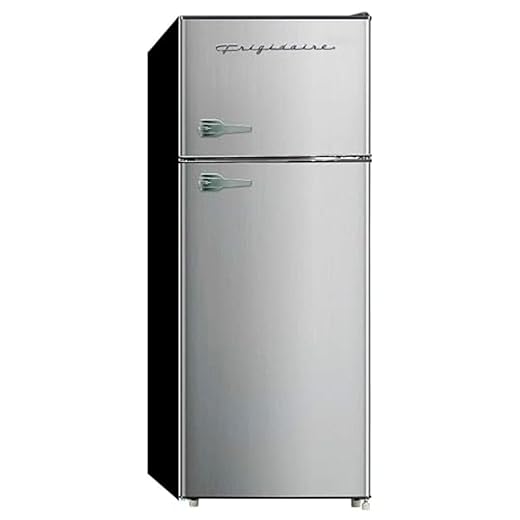Choosing the Perfect Refrigerator: Built-In vs. Freestanding
Navigating the refrigerator market can feel overwhelming, but it doesn’t have to be! In this guide, you’ll discover how to make an informed choice between BUILT-IN and FREESTANDING refrigerators, ensuring your kitchen reflects both your needs and your style. Let’s get started!
What You Need to Get Started
Step 1: Measure Your Space
Is Your Kitchen Ready for a New Fridge?Start by measuring your kitchen area. Use a tape measure to determine the height, width, and depth of the space where your refrigerator will go.
Don’t forget to include door swing space! Ensure that doors can open fully without obstruction. For example, if the refrigerator door hits a nearby cabinet or wall, it could lead to frustration.
Record these measurements carefully. If you’re eyeing a built-in model, be particularly cautious, as it needs precise fitting. This step is vital to avoid surprises during delivery and installation!
Step 2: Understand Your Budget
What’s Your Wallet Saying?Determine how much you’re willing to spend. Built-in refrigerators typically come with a higher price tag compared to freestanding models. For example, a sleek built-in option might cost you $5,000, while a stylish freestanding model could be available for around $1,500.
Consider long-term savings. Built-in refrigerators often have better energy efficiency, which can lead to lower utility bills. Think about how much value a quality built-in might add to your home if you plan to sell in the future. Evaluate both immediate costs and potential long-term benefits to make an informed decision.
Step 3: Evaluate Your Storage Needs
Are You a Food Hoarder or Minimalist?Assess how much food you typically store each week. If you frequently buy in bulk or enjoy entertaining, a freestanding refrigerator often provides larger capacities to accommodate your needs.
Think about your shopping habits. For instance, if you host family gatherings or meal prep for the week, a more spacious option is a better fit. On the other hand, a built-in refrigerator may enhance aesthetics but could limit your storage, potentially leaving you cramped for space.
Make a list of items you regularly keep. Include fresh produce, frozen foods, beverages, and any specialty items. This evaluation will guide you toward the best choice for your lifestyle.
Step 4: Explore Design and Aesthetics
Does Style Matter More Than Function?Consider how your refrigerator fits into your kitchen’s overall design. Built-in refrigerators create a polished, seamless look, blending seamlessly with your cabinetry. For instance, if you have custom cabinets, a built-in unit can enhance the elegance of your kitchen.
Evaluate your preference for style. Freestanding models often come in a wider range of colors and designs. If you envision a bold, retro refrigerator as a statement piece, a freestanding option could be the way to go.
Visualize your kitchen layout. Take some time to picture how each option aligns with your kitchen’s theme, ensuring your choice complements your unique style and elevates the space.
Step 5: Assess Energy Efficiency
Can a Fridge Save You Money on Bills?Examine the energy efficiency ratings of both refrigerator types. Built-in models often excel here, providing better insulation and lower energy consumption. Look for units with ENERGY STAR ratings, which guarantee efficient performance.
Research specific freestanding models. For example, some newer freestanding designs now boast advanced features that enhance energy savings. Compare the annual energy costs listed in the specifications to make an informed choice.
Consider the long-term impact. A refrigerator that saves energy today will not only lower your utility bills but also help you contribute to a greener planet.
Step 6: Consider Resale Value
Will Your Choice Pay Off in the Long Run?Evaluate how your refrigerator choice affects your home’s resale value. Built-in refrigerators tend to enhance your kitchen’s appeal and can attract buyers willing to pay a premium for a finished look.
Think about the flexibility a freestanding model offers. This option can be appealing to buyers who prefer the ability to change styles and layouts, especially if they like DIY projects.
Reflect on your neighborhood’s market trends. For instance, if upscale built-in appliances are standard in your area, investing in one may yield a better return. Make your choice with future buyers in mind!
Making the Final Decision
By now, you should have a clearer picture of which refrigerator type fits your needs and lifestyle. Choose wisely, and enjoy your newly organized kitchen space! As you make your choice, which features will enhance your daily routine the most?





This guide is super helpful! I never really thought about the energy efficiency part before. I’m leaning towards a built-in since it looks more sleek, but I need to measure my space first. Anyone have tips on how to make sure I don’t mess up those measurements? 🤔
Great point, Mark! Remember to leave a little space around the fridge for ventilation as well.
Yeah, measuring can be tricky! Make sure you account for the door swing too, or you might end up with a fridge that doesn’t fit. 😅